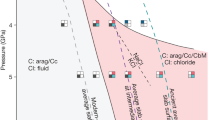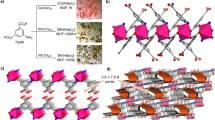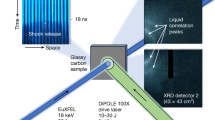Abstract
THE lines produced in mass spectra by hydrocarbon molecules have always played a predominant part in the accurate measurements of mass. This is particularly so in the use of the doublet method, since their high masses, due to the hydrogen, tend to provide easily resolvable doublets with ordinary atomic lines. With methane and ethane there is no difficulty in producing all the lines of the C1 and C2 groups, but when propane is used in a cylindrical discharge tube, only the first four lines of the C3 group, 36, 37, 38 and 39, have a workable intensity. These were used in the measurements of the isotopes of chlorine1. Fortunately, the lower pressure discharge in an eight-inch bulb gives all the lines up to C3H8, though the even ones, 40, 42, 44, are weaker than the others. This has enabled comparisons to be made with the multiply charged lines of krypton and xenon, giving direct measurements of their packing fractions much more accurate than the indirect ones made ten years ago2. The following are the results:
This is a preview of subscription content, access via your institution
Access options
Subscribe to this journal
Receive 51 print issues and online access
$199.00 per year
only $3.90 per issue
Buy this article
- Purchase on SpringerLink
- Instant access to full article PDF
Prices may be subject to local taxes which are calculated during checkout
Similar content being viewed by others
References
NATURE, 138, 1094 (December 26, 1936).
Proc. Roy. Soc., A, 115, 506 (1927)
Author information
Authors and Affiliations
Rights and permissions
About this article
Cite this article
ASTON, F. Packing Fractions of Krypton and Xenon. Nature 140, 149 (1937). https://doi.org/10.1038/140149a0
Issue date:
DOI: https://doi.org/10.1038/140149a0
This article is cited by
-
Masses of Krypton-82, -84 and -86 and Xenon-129 and -132
Nature (1951)
-
Restropic Activity of Blood
Nature (1938)



